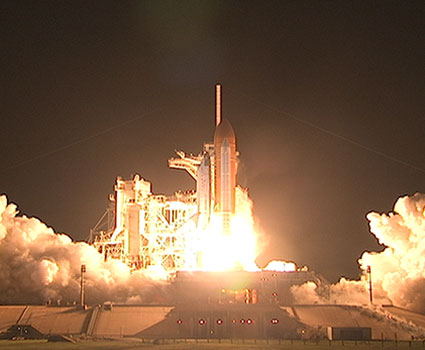When the connection is made, at 13:XNUMX a.m. this morning, for the second time XNUMX people will be on the International Space Station at the same time

The space shuttle Discovery, on mission STS-128 closes the orbital gap between it and the International Space Station. After the completion of the series of operations and maneuvers that began at 15:39 EST (22:39 Israel time).
The ignition of the shuttle's engines is expected at 18:25 EST (01:25) and at around 21:04 (XNUMX am Israel time) it is supposed to dock at the station after the maneuver that has become traditional in which it will perform an inversion so that members of the space station crew can photograph its lower part and the areas The sensitive ones at the ends of the wings and in the nose. The images taken by station commander Gennady Padalka and flight engineer Mike Barratt will be used by ground crew members to examine the shuttle's insulation tiles.
Commander Rick Storkov and Pilot Kevin Ford will make several subtle course corrections to reach station and perform the inversion.
During the day and a half since launch, the astronauts spent a lot of time scanning the shuttle's thermal protection system using cameras and sensors attached to the shuttle's robotic arm. This activity was especially important this time, since the launch was carried out at night (midnight local time) and the conditions for filming were less favorable, so it is not possible to rely on the photos to know if any debris hit the shuttle during the launch.
With the docking, it will be the second time in history that 13 people will be on the International Space Station at the same time.
